Pickled Okra (Crisp, Peppery & Flavorful)
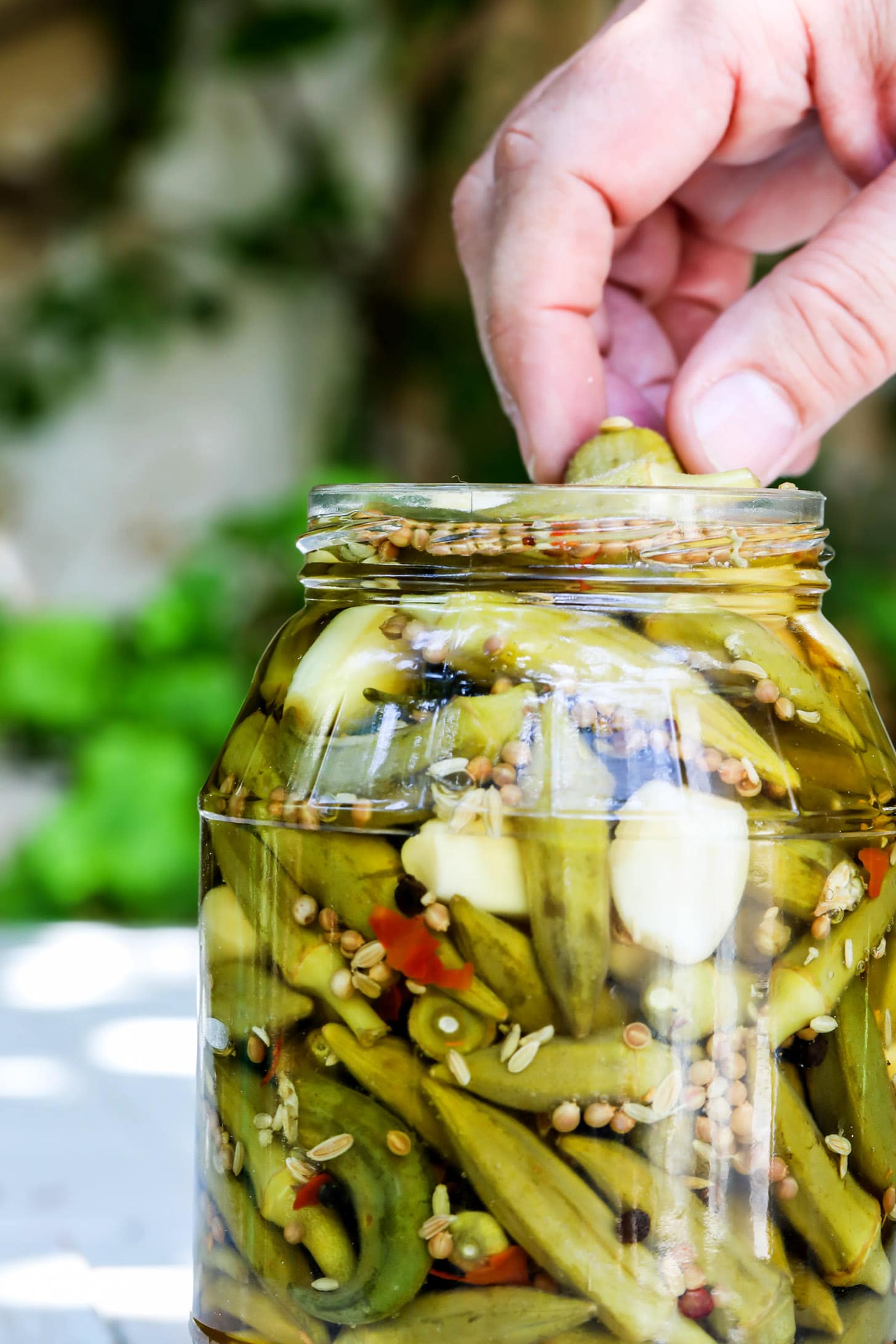
You may not have realized that pickled okra was a thing.
Well it is, and definitely a thing you should try!
You can pickle just about anything, but okra lends itself particularly well to this preparation.
Nice and crisp, pickled okra definitely belongs on the plate alongside all the pickle greats.
Full of wonderful probiotics, fermented foods are a must for a healthy gut, so might as well do it in style.
What is Pickled Okra All About?
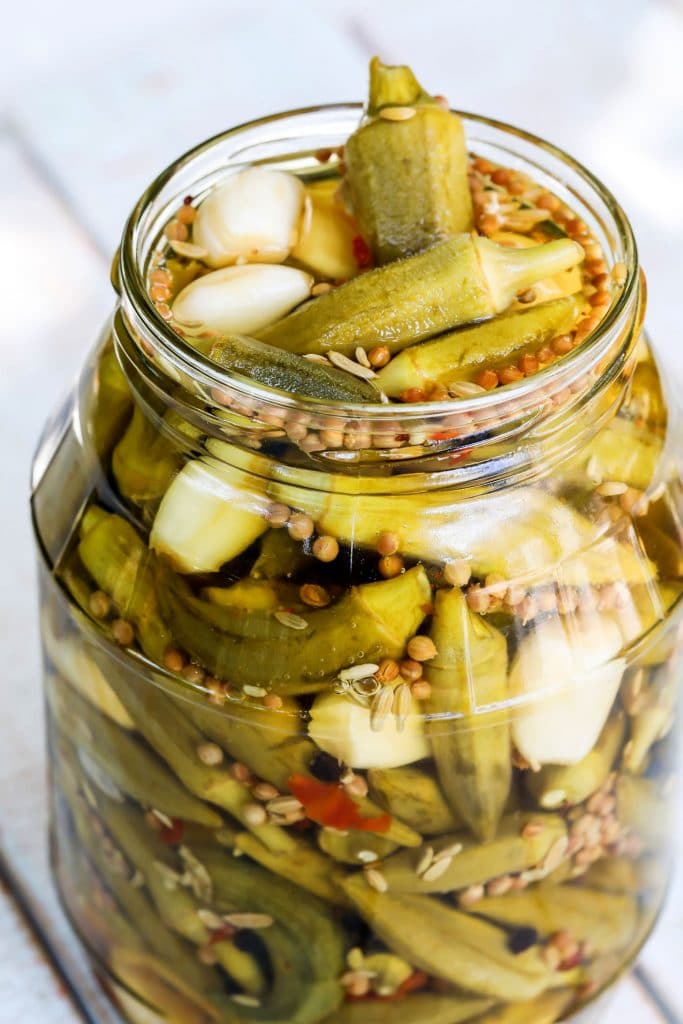
Okra, technically abelmoschus esculentus, also known as gumbo or ladies’ fingers is a type of vegetable.
It is a flowering plant in the mallow family that flourishes in the warm season.
Abelmoschus is New Latin from Arabic (abū l-misk, “father of musk”).
Esculentus is also Latin meaning suitable for human consumption.
Geographical origins of okra point mainly to South Asia, West Africa, and Ethiopia.
History suggests that okra entered southwest Asia through the Red Sea or Bab el Mandeb to the arabian peninsula.
The Egyptians and Moors called okra by the arabic word Bamya.
This suggests that it came to Egypt from the Arabian peninsula.
Okra has fuzzy looking pods, with edible seeds inside.
The mucilaginous juice which is full of fiber with a mild flavor, is often used to thicken sauces.
Okra is also used for medicinal purposes administered as okra water, okra peels, and powdered seeds.
A vegetable popular in the Middle East, South America, the Caribbean, and parts of Africa.
It’s also cultivated in tropical, subtropical and warm regions around the world.
Okra is rich in fiber, antioxidants, vitamins, and minerals, such as phenolic compounds and flavonoid derivatives.
Science believes that these compounds can help in lowering the risk of cancer.
As well as having antimicrobial and anti-inflammatory characteristics.
How To Make Pickled Okra
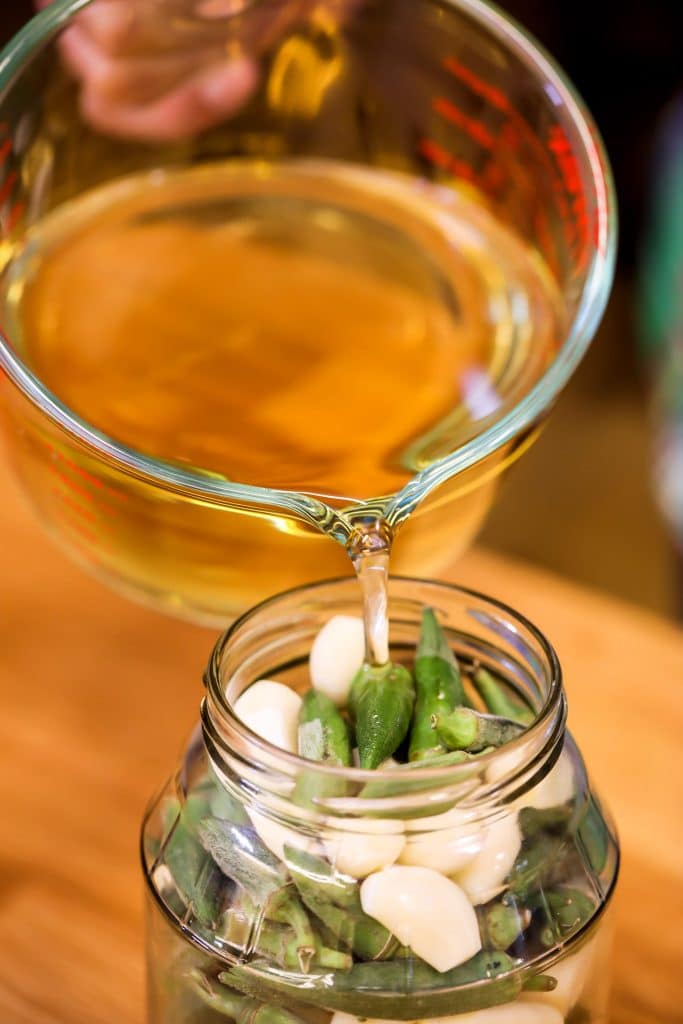
In summer, the farmers market is a wonderful place to get fresh tender okra for pickling.
This okra recipe calls for garlic cloves, peppercorns, coriander seeds and fennel seeds.
Dill seed can be a good substitute for the fennel.
Add the seeds and peppercorns to a pint jar, then layer the garlic and pack the okra until the jar is full.
(Some people like to add mustard seeds to the mix.)
Bring to a boil in a medium saucepan, vinegar, water, kosher salt and a little sugar, stirring until dissolved.
Allow the liquid to cool to room temperature.
When you pickle the okra, the pods fill up with pickling juice, and it just tastes great.
Pour the vinegar mixture into the jars leaving the contents covered.
Tap the jar to loosen any air bubbles, then refrigerate.
If using canning jars, then follow jarring instructions.
Pickles in Middle Eastern Cuisine
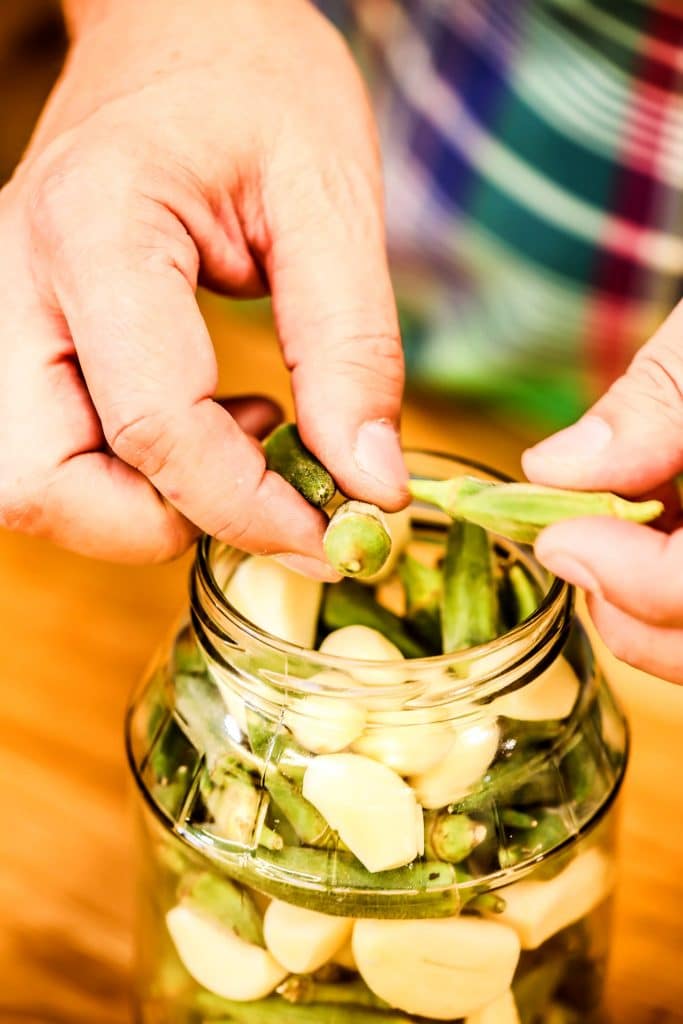
Pickles or mukhallal is very popular in Middle Eastern cuisine.
It’s considered part of the mouneh practice of food preservation.
This involves storing different vegetables in jars of water concentrated in salt & vinegar.
Pickles also are a main part of the Middle Eastern appetizers or mezze.
Pickled vegetables such as carrots, beets, eggplant, celery, and cauliflower are all part of this feast.
In order to preserve okra all year round, people tend to pickle or freeze it.
Benefits of Pickled Okra
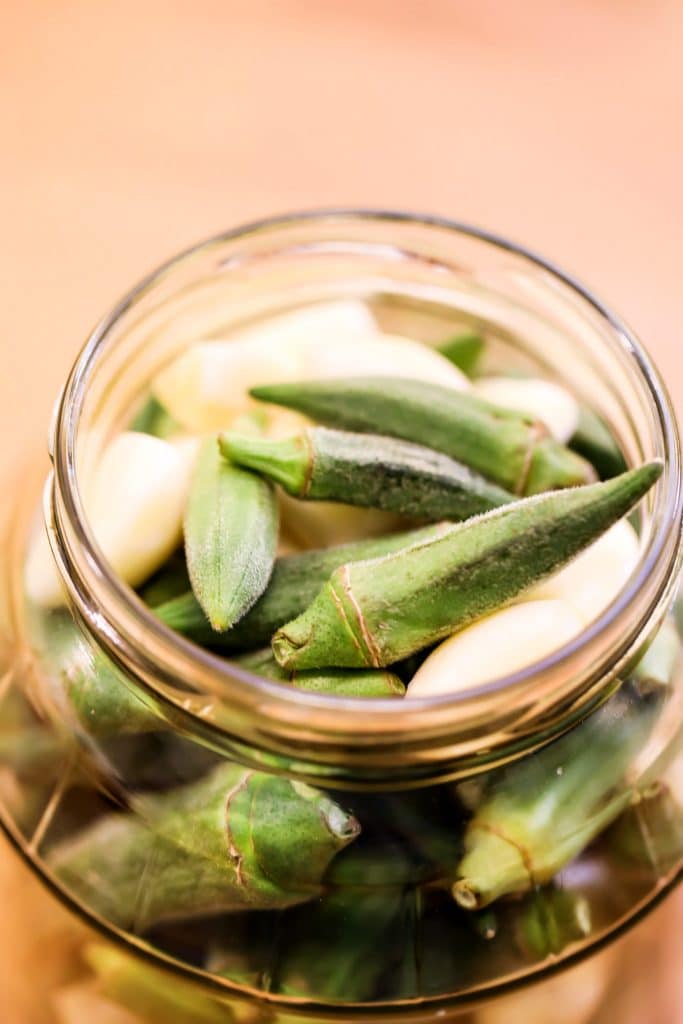
Whereas you might just eat pickles to enjoy their zesty taste, they actually have health benefits.
They are in fact loaded with vitamins and minerals.
Pickles will help improve digestion because they are full of the good bacteria known as probiotics.
Fermented vegetables are good for fighting disease.
Containing high amounts of antioxidants called beta-carotene, transforms to vitamin A in the body.
Carotene is proven to be great at lowering the risk of cancer.
It can also protect from heart disease, strokes, and respiratory diseases.
Athletes often drink pickle juice after exercise to replace lost electrolytes during exercise.
Okra is rich in fiber, which helps digestion, and reduces cravings for food.
Some studies have shown that okra has an anti-stress effect.
Other research suggests that okra helps in lowering cholesterol.
It appears to bind to cholesterol in your body, lowering blood cholesterol levels.
Okra can also protect your heart; rich in polyphenols which fight harmful inflammation.
Okra Dishes From Around The World
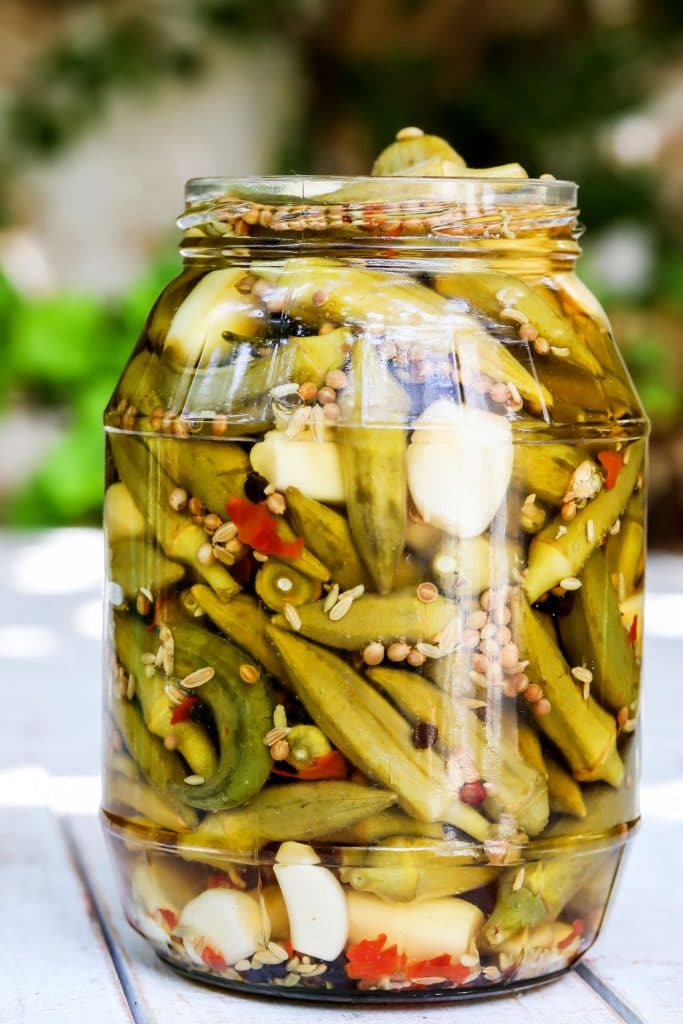
This vegetable can be cooked in many different ways.
Okra can get slimy when cooked with stew, but there are ways to avoid that if you don’t like the slimy effect.
Quick cooking of okra and dry heating makes it more crunchy.
Slow cooking makes it more slimy and is used as a thickening agent.
Bamya, a popular dish in the Middle East is an okra stew, with spices and a tomato sauce.
Okra can also be fried, seasoned with salt, and eaten with bread.
In the US South, particularly in Louisiana, okra is mostly used in the dish gumbo.
Usually made with seafood, chicken, or sausage.
Okra is used as a kind of thickening agent.
Another southern classic dish is fried okra.
It’s dredged in egg and cornmeal then fried until golden brown.
There are many dishes where okra is roasted or grilled.
It can be flavored with peppers, spices, and olive oil.
Roasting okra brings out the nutty, grassy flavor with an almost sweet edge.
In India, there is an okra dish called kurkuri bhindi.
The okra is sliced thin, then dipped into a flour, turmeric, chili powder, carom, and chaat masala, mix.
The battered okra is then deep fried.
In Japan, okra is eaten cold as a salad.
The okra is blanched in boiling water, then put in an ice bath to retain the green color.
Then it’s sliced, chilled, and served with soy sauce for a simple salad.
There are many different recipes for okra around the world, where it is enjoyed by many.
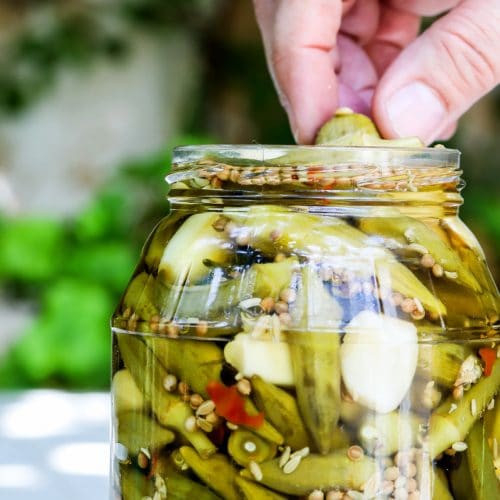
Pickled Okra Recipe
Ingredients
- ½ lb Fresh Okra
- ¼ lb Garlic Cloves
- 2 cups Vinegar
- 2 cups Water
- 2 tbsp Salt
- 2 tbsp Sugar
- 2 tsp Coriander Seeds
- 2 tsp Red Pepper Flakes
- 1 tsp Fennel Seeds
- 1 tsp Peppercorns
Instructions
- Place the coriander seeds, pepper flakes, peppercorns, and fennel seeds in a quart jar.
- Layer the okra and garlic cloves.
- Bring the vinegar, water, salt and sugar to a boil until all dissolved.
- Cool the liquid to room temperature then add to the jar and cover the okra.
- Refrigerate and let sit for at least 24 hours.

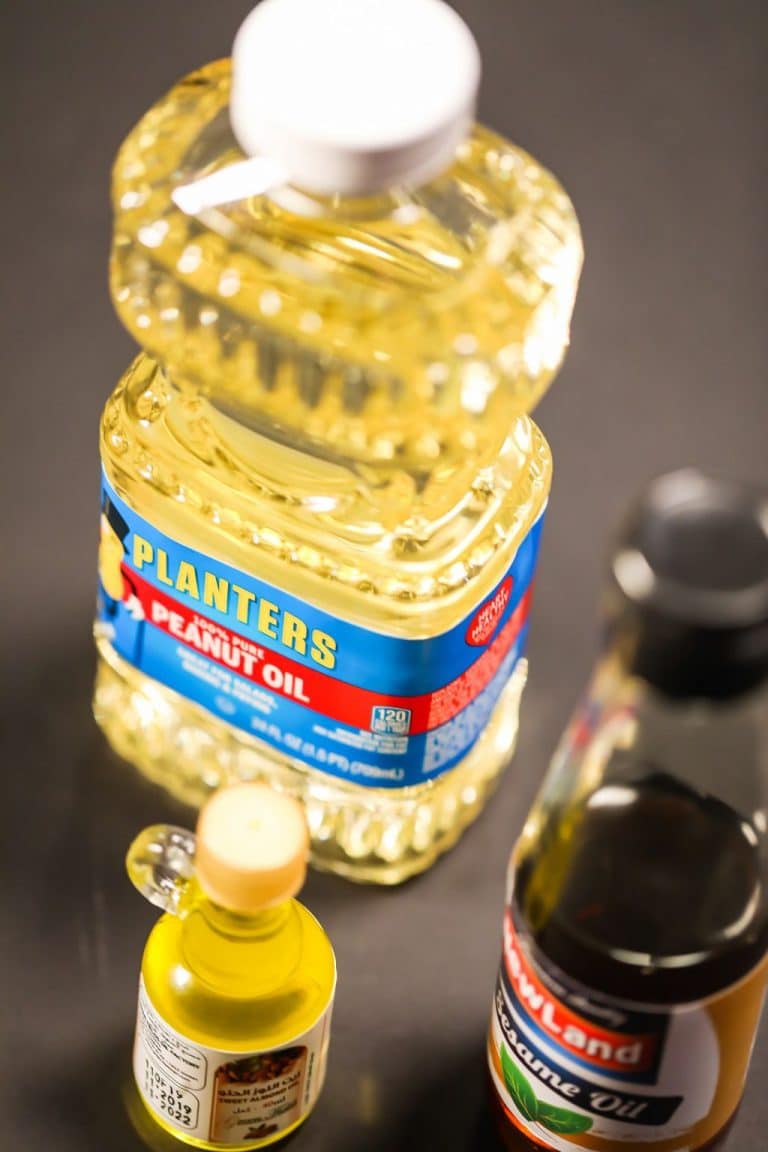
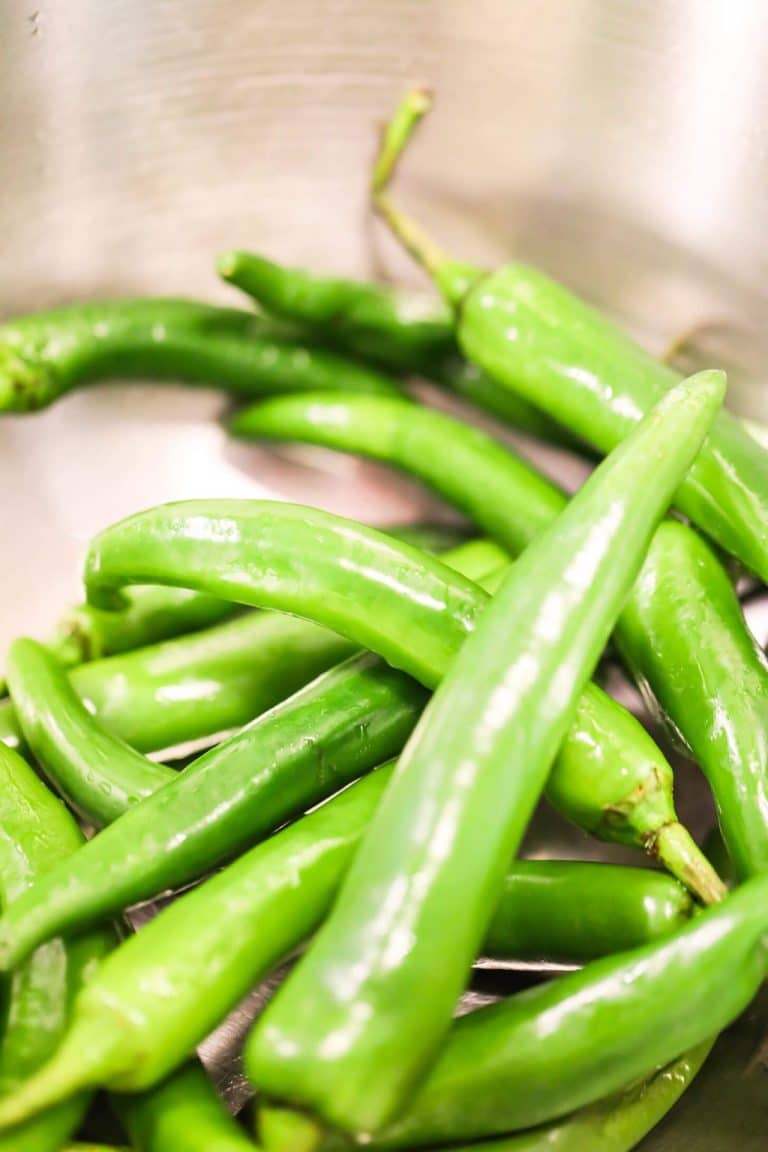
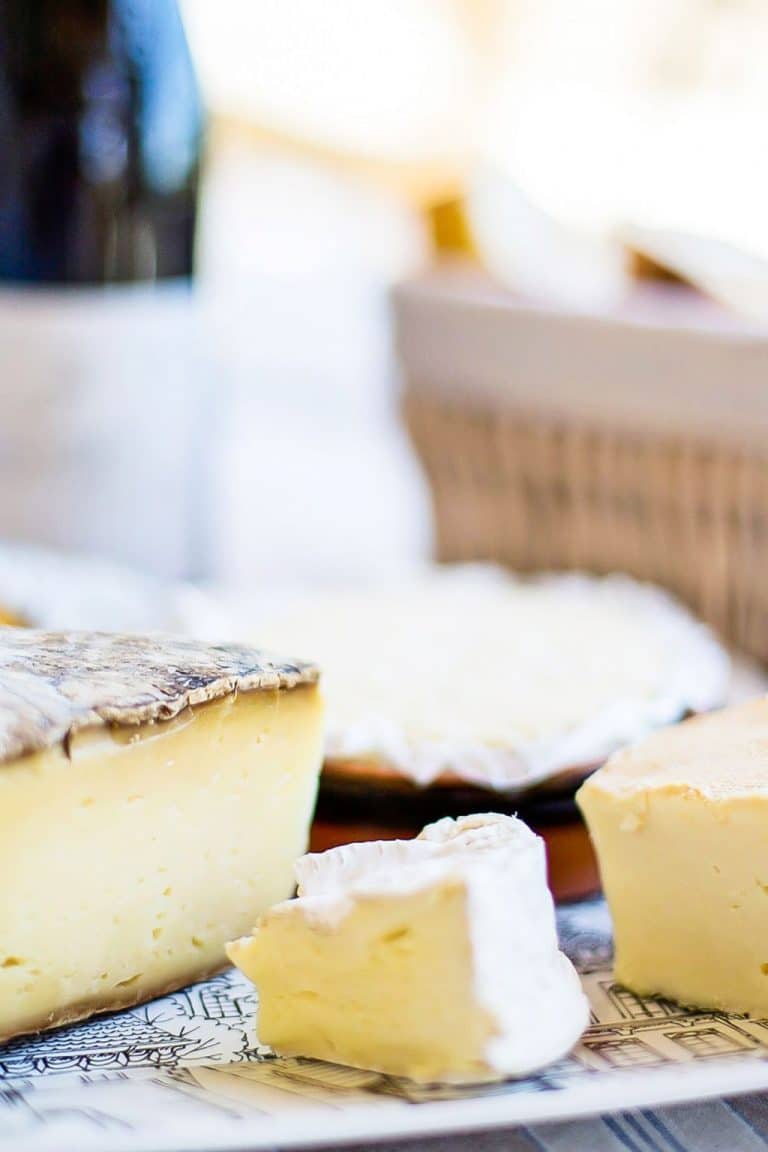
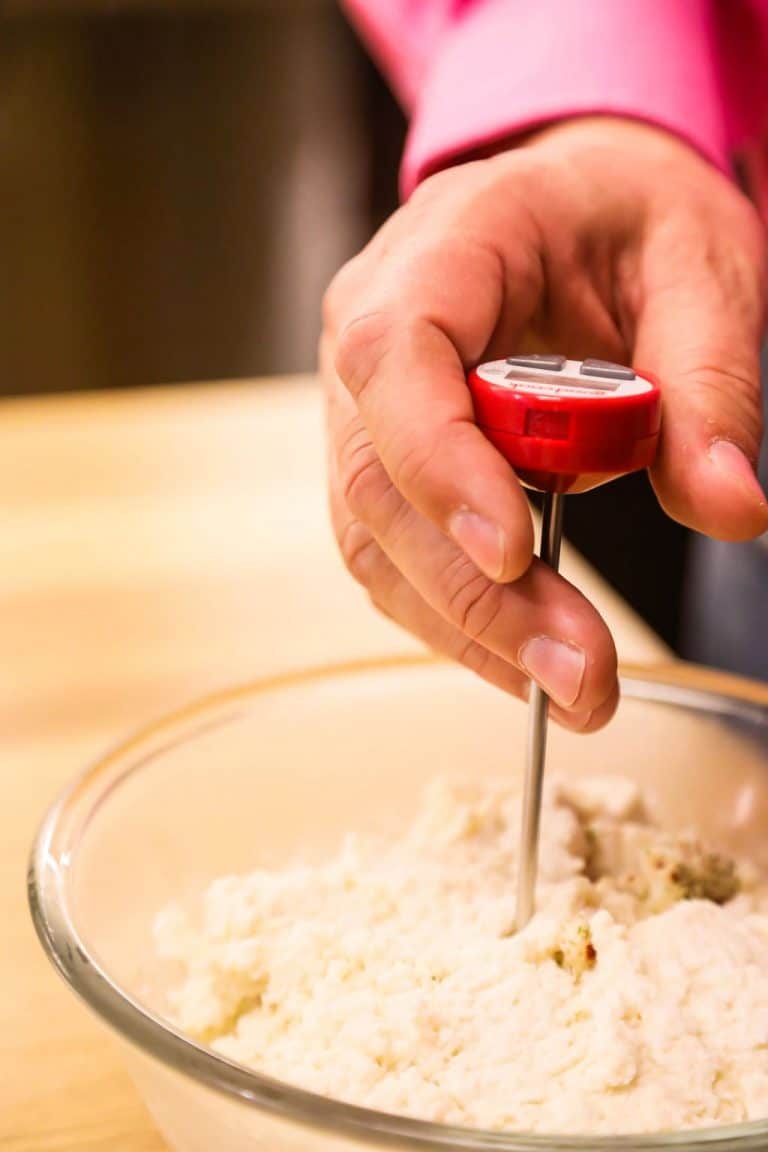
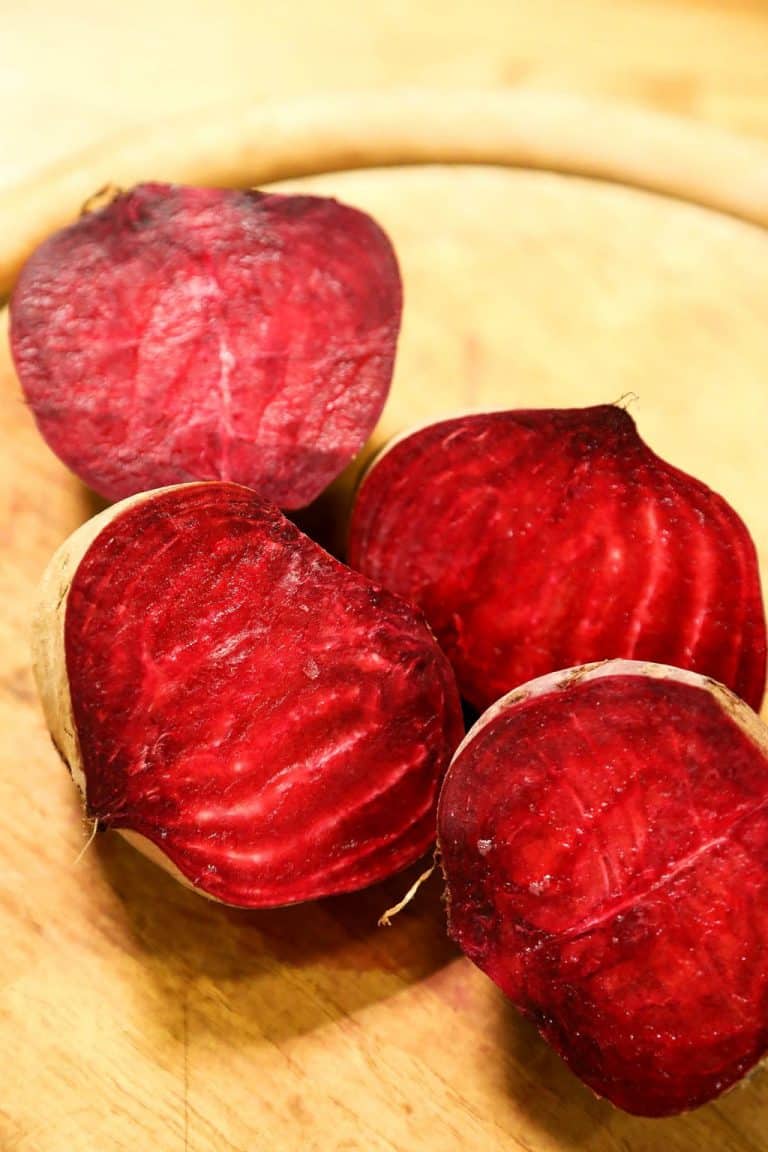
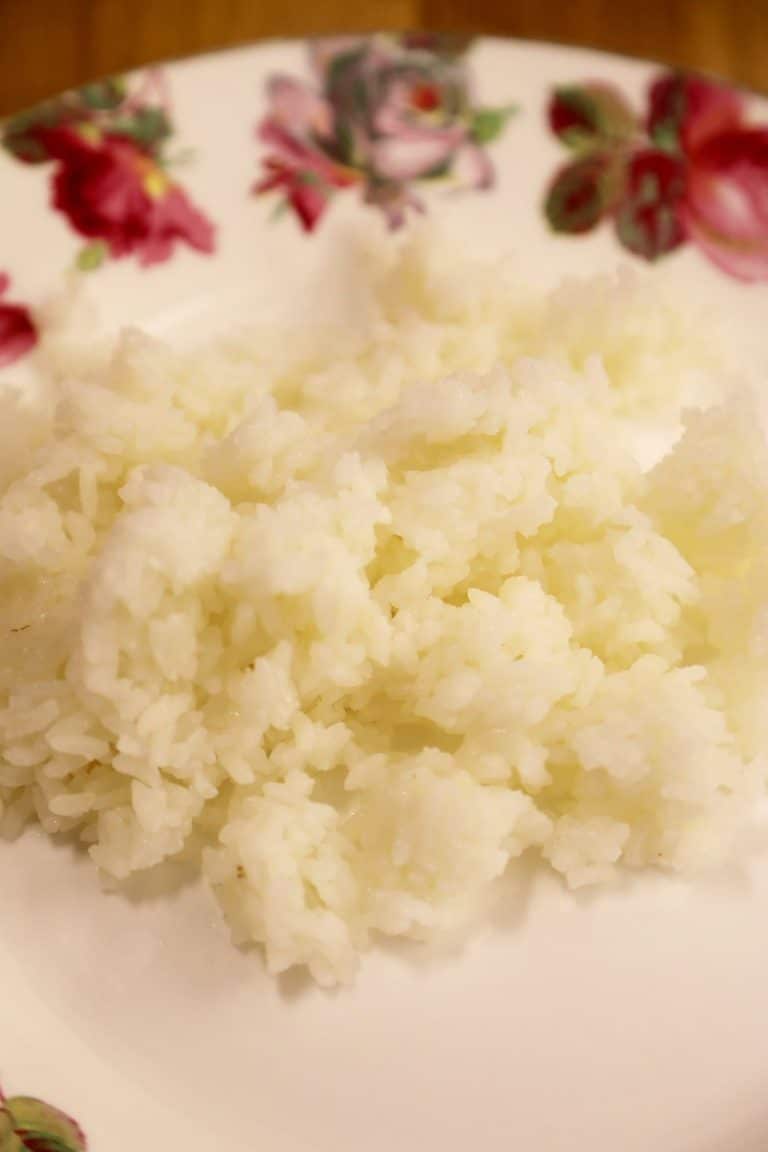
Can this recipe be water bath canned?
Yes, it can be with very good affect.
Awesome for extra okra to have during winter!!!! Thank you, so easy!
I’m delighted!